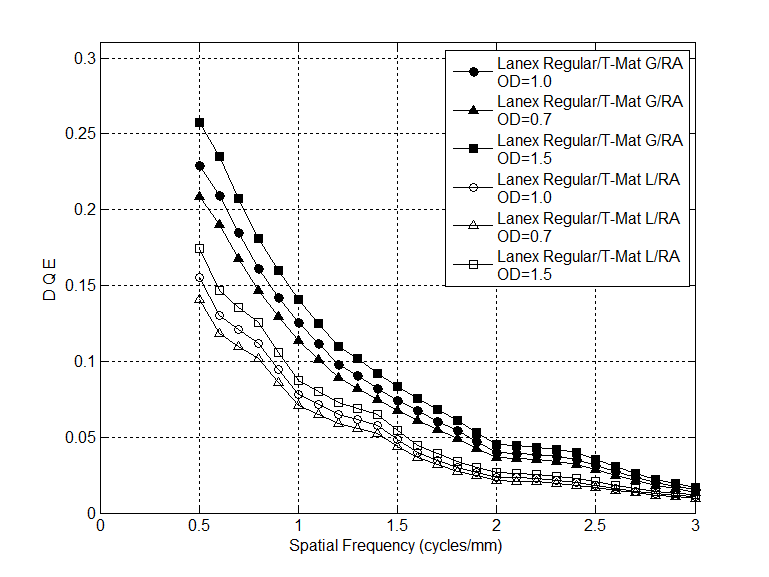Assessment of Medical X-Ray Radiographic Screen-Films in Different Spatial Frequencies According To Detective Quantum Efficiency Computation
Quantum Efficiency
DOI:
https://doi.org/10.14331/ijfps.2012.330026Keywords:
Detective Quantum Efficiency (DQE), Diagnostic Radiology, Image quality, Screen-filmAbstract
In medical imaging, to make better images there are some measures such as detective quantum efficiency (DQE) and noise equivalent quanta (NEQ) used to evaluate the image quality of each imaging system. Detective quantum efficiency (DQE) is one of the important measures in the assessment of image quality and detector performance. DQE of two types of screen-films namely Lanex Regular/T-Mat G/RA and Lanex Regular/T-Mat L/RA were determined using MTF and NPS data, separately. Moreover, gamma was calculated from characteristic curves for each screen film and photon flounce was estimated using published literature. DQE of the screen-films were computed for three optical densities 0.7, 1.0 and 1.4. The results show Lanex Regular/T-Mat G has better DQE than Lanex Regular/T-Mat L -especially at low frequency with higher contrast for diagnostic radiology purposes.
Downloads

Downloads
Published
How to Cite
Issue
Section
License
Copyright (c) 2012 International Journal of Fundamental Physical Science

This work is licensed under a Creative Commons Attribution 4.0 International License.










